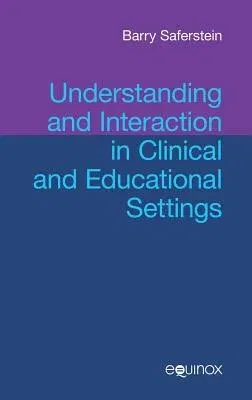Barry Saferstein
(Author)Understanding and Interaction in Clinical and Educational SettingsHardcover, 6 October 2016

Qty
1
Turbo
Ships in 2 - 3 days
In Stock
Free Delivery
Cash on Delivery
15 Days
Free Returns
Secure Checkout

Part of Series
Studies in Communication in Organisations and Professions
Print Length
394 pages
Language
English
Publisher
Equinox Publishing (UK)
Date Published
6 Oct 2016
ISBN-10
1845534352
ISBN-13
9781845534356
Description
Product Details
Author:
Book Format:
Hardcover
Country of Origin:
US
Date Published:
6 October 2016
Dimensions:
23.62 x
15.75 x
2.54 cm
ISBN-10:
1845534352
ISBN-13:
9781845534356
Language:
English
Location:
Sheffield
Pages:
394
Publisher:
Weight:
703.07 gm